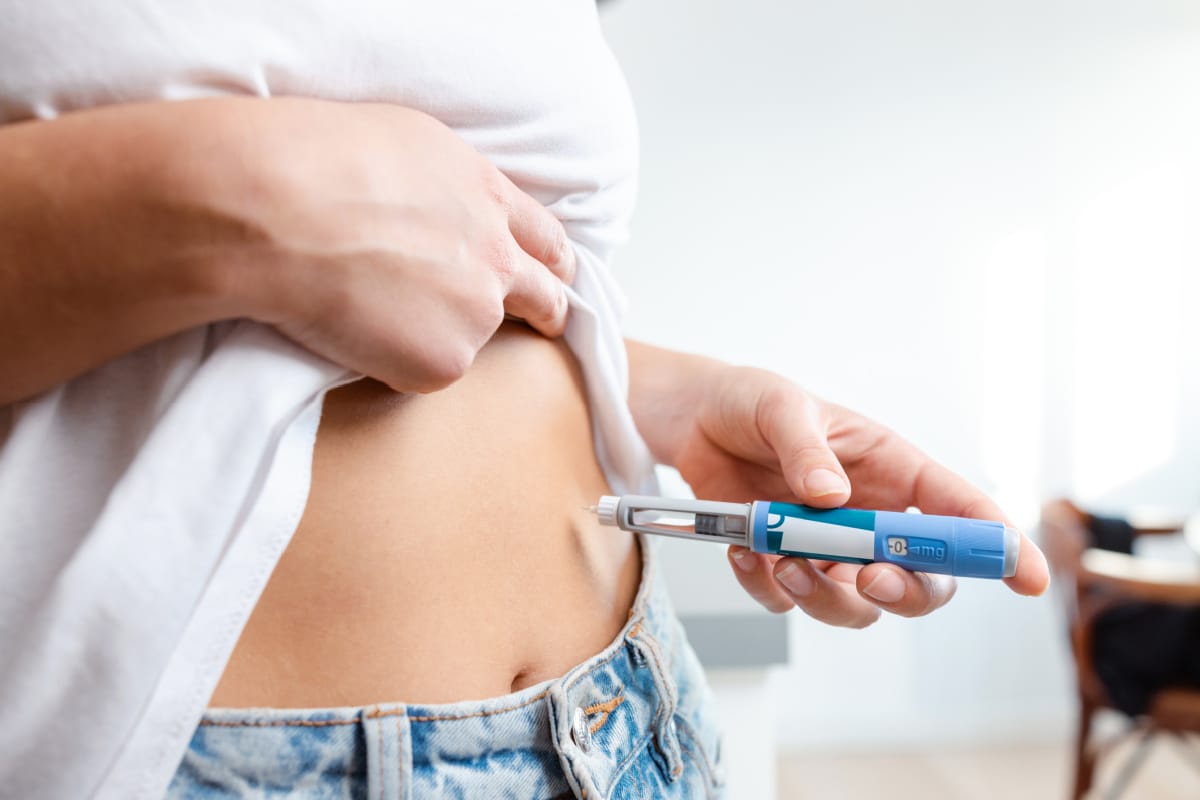Over the last few years, weight-loss medications like Ozempic® (semaglutide), Mounjaro® (tirzepatide), and Saxenda® (liraglutide) have taken the world by storm. Originally designed to help manage type 2 diabetes, these drugs are now widely prescribed to support chronic weight management—and they’re changing the way we approach obesity treatment.
But as their popularity grows, so does our understanding of their potential side effects. One surprising new finding? Some studies suggest that GLP-1 receptor agonists (GLP-1 RAs) may be linked to acne, particularly in women.
If you’ve recently started one of these medications and noticed changes in your skin, you’re not alone. In this article, we’ll break down what the science says, why women may be more affected than men, and what you can do if you’re experiencing acne while on these medications.
What Are GLP-1 Receptor Agonists?
GLP-1 receptor agonists are a class of medications that mimic a natural hormone in your body called GLP-1. They work by:
- Reducing appetite so you eat less
- Slowing digestion to keep you fuller for longer
- Helping regulate blood sugar levels
- Supporting significant weight loss in many people
Some of the most common GLP-1 medications include:
- Semaglutide – Ozempic® and Wegovy®
- Tirzepatide – Mounjaro®
- Liraglutide – Saxenda® and Victoza®
Thanks to their impressive weight-loss results and strong media attention, these drugs have become incredibly popular—even among people without diabetes.
The Rise of GLP-1 Medications and a New Skin Concern
In recent years, prescriptions for semaglutide, tirzepatide, and liraglutide have skyrocketed. Many people, particularly women of reproductive age, are now using these medications to manage weight.
However, researchers are starting to notice unexpected side effects—and one of the most surprising is acne.
A recent study published in the Journal of the American Academy of Dermatology found a potential link between GLP-1 medications and acne vulgaris in women—but not in men.
On social media platforms like TikTok and Reddit, users are already sharing personal stories about experiencing new breakouts after starting medications like Ozempic and Mounjaro. While anecdotal, these reports sparked researchers to dig deeper.
Why Women Might Be More Affected
So why would GLP-1 medications affect women’s skin more than men’s? It comes down to hormones.
Here’s what researchers think is happening:
- Obese women often have higher androgen (male hormone) levels, a condition called relative hyperandrogenism.
- GLP-1 receptors in the body become more sensitive when androgen levels are high.
- As a result, women with these hormonal patterns may be more prone to GLP-1-related skin changes like acne.
In contrast, obese men typically have lower androgen levels, which may explain why they don’t seem to experience the same acne risk.
How GLP-1 Medications Could Trigger Acne
While more research is needed, scientists have proposed a potential hormonal cascade that may explain the acne link:
- GLP-1 medications stimulate growth hormone release.
- Growth hormone boosts levels of insulin-like growth factor-1 (IGF-1) in the liver.
- IGF-1 increases oil (sebum) production in the skin’s sebaceous glands.
- Excess sebum can clog pores and lead to breakouts.
Interestingly, previous research shows that women with acne often have higher IGF-1 levels compared to women without acne. In men, IGF-1 doesn’t seem to play as big of a role—again, supporting the gender-specific findings.
What the Research Says—And Its Limitations
Before you panic, it’s important to know that this research is still very new. The study that raised these concerns had several limitations:
- It relied on electronic health records, which may miss mild or unreported acne cases.
- Only diagnosed acne vulgaris was captured, so less severe breakouts might have been overlooked.
- The study didn’t account for certain factors, like polycystic ovarian syndrome (PCOS) or metabolic syndrome, both of which are known to affect hormones and acne risk.
Additionally, the average age of participants was 47 years—a group where acne is typically less common. This raises questions about whether some diagnoses might have been misclassified or influenced by other factors.
What This Means for You
If you’re taking a GLP-1 medication like Ozempic, Wegovy, Mounjaro, or Saxenda, here’s what dermatologists and prescribers recommend:
1. Talk to Your Doctor Before Starting
- If you have a history of acne or PCOS, mention it before beginning GLP-1 therapy.
- Your doctor can discuss possible risks and suggest preventive strategies.
2. Monitor Your Skin
- Breakouts may appear within the first few months of starting treatment.
- Keep a simple journal of skin changes to share with your healthcare provider.
3. Build a Proactive Skincare Routine
- Use a gentle cleanser to avoid stripping your skin.
- Incorporate non-comedogenic moisturizers and sunscreens.
- Consider over-the-counter acne treatments like salicylic acid or benzoyl peroxide if approved by your doctor.
4. Collaborate With a Dermatologist
- Patients often notice side effects first.
- Social media can flag trends that prompt deeper research.
- Doctors are now paying more attention to real-world feedback when prescribing new treatments.
The Bottom Line
GLP-1 receptor agonists like Ozempic, Wegovy, Mounjaro, and Saxenda are highly effective for weight loss, but like all medications, they can come with side effects—including possible changes to your skin.
While early studies suggest a link between these drugs and acne in women, more research is needed to confirm the connection and understand who is most at risk.
If you’re taking one of these medications and notice new or worsening acne, don’t stop your treatment without talking to your doctor. With the right skincare routine and professional support, most cases can be managed effectively.
Key Takeaways
- GLP-1 medications are game-changers for weight management but may be linked to acne in women.
- The connection likely involves hormonal changes, especially increased IGF-1 and oil production.
- Men don’t appear to be affected in the same way.
- Always talk to your healthcare provider before making changes to your treatment.
- Ongoing research will help us better understand and manage this potential side effect.

